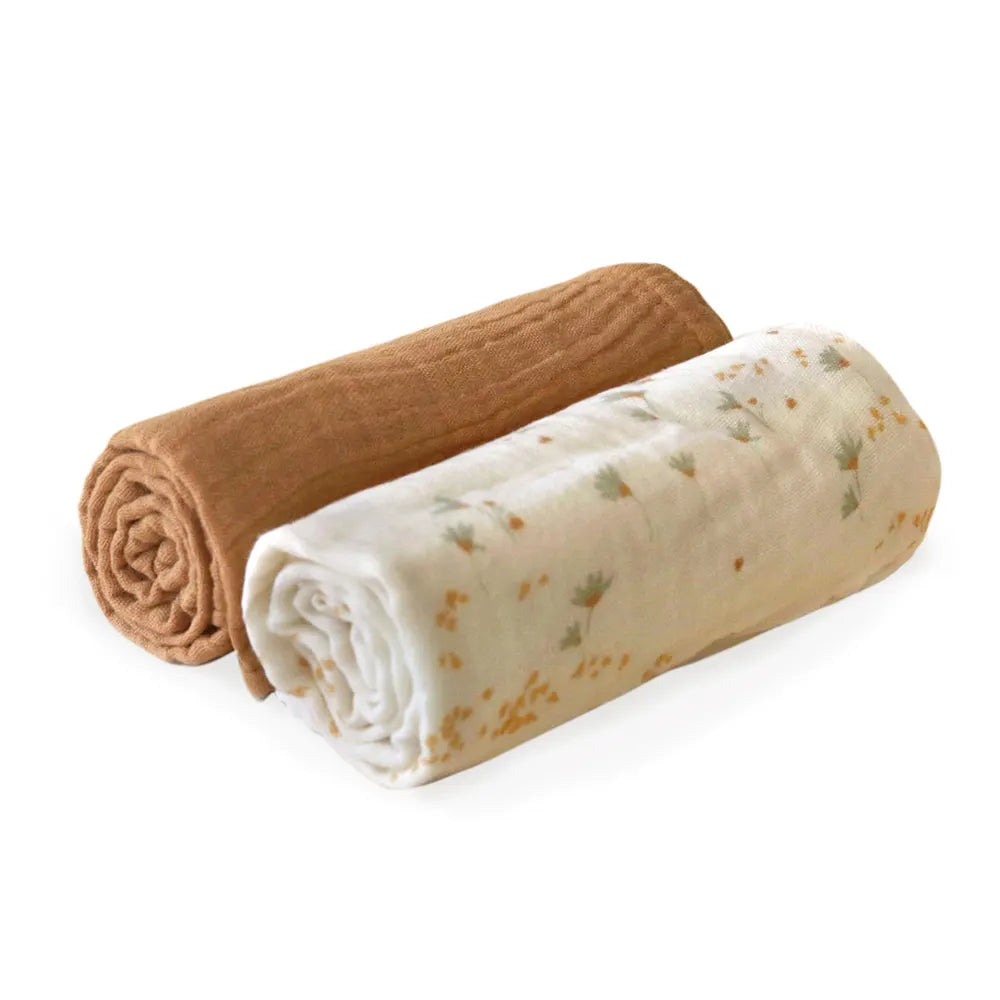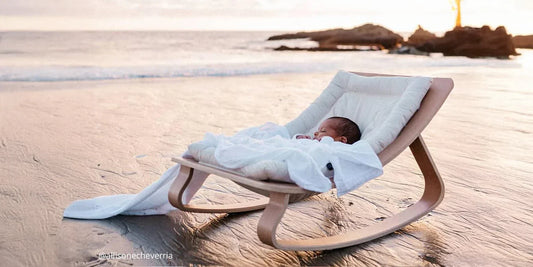Building the perfect sleep environment : from crib to cozy comfort
Universally, the number one disadvantage for all parents is lack of sleep. Over and above that, let’s say that babies' nights are unfortunately not linear, and this continues throughout their childhood. Sleep works in cycles and can be disrupted by certain intense periods of learning, teething, minor illnesses of all kinds, and changes in routine. Nevertheless, to give your baby the best chance of getting to sleep, there are certain rules you should follow. Creating the right environment for your baby before bedtime is an art that can be mastered in a few key steps, which we outline below.

The right environment
Just like adults, your baby's bedroom should be a healthy space. It is therefore advisable to air the room after each nap and every morning. The temperature should be neither too hot nor too cold. Between 18 and 20 degrees Celsius is ideal. Last but not least, the air should be neither too dry nor too humid. The idea is to create a comfortable and safe little cocoon so that your baby can rest peacefully.
Breathable fabrics
Now that you have created a favorable environment, don't stop there! You also need to put your baby in the best conditions for sleeping by choosing the right fabrics for their bodysuits, pajamas, bedsheets, etc. Opt for breathable fabrics such as cotton, preferably organic, to avoid nighttime awakenings due to sweating. Finally, choose outfits that are appropriate for the season: not too much or too little clothing. If in doubt, place your finger on the back of their neck. If they are sweating, remove a layer.
The importance of a good crib and mattress
At Charlie Crane, infant sleep is one of our main concerns. That's why we've created two wonderful cribs to help your baby fall asleep.
- KUMI is a wooden cradle for babies aged 0 to 6 months that gently rocks them thanks to a side-to-side rocking motion. It can be moved from room to room and, thanks to its breathable, transparent fabric, reassures both parents and children.
- KUKO is a reassuring bassinet ideal for newborns.With its breathable cover in cotton jersey and its natural wood support that gently follows every movement, the KUKO bassinet ensures that newborns sleep peacefully and safely..
A high-quality sleeping bag
Invest in a quality sleep sack (you may even want two, because diaper leaks and middle-of-the-night messes do happen!). Choose one that’s just right for your baby’s age and stage. A little tip: Dreamland Baby’s gently weighted sleep sacks are truly magical. Featuring their exclusive CoverCalm® Technology, the weight is evenly distributed from your baby’s shoulders to toes, creating a calming, soothing sensation that feels just like a comforting hug. The result? Easier, longer, more restful sleep for baby and for you. It’s no wonder parents call it a total game-changer. And remember: always place your baby on their back to sleep.
A routine
For newborns, there is no such thing as a routine in the literal sense. However, as a parent, you can already help them understand the cycles of day and night. How? By feeding them at set times, engaging them in more stimulating play in the morning and calmer games before bedtime, exposing them to daylight during your daily walks, and offering them naps at set times. On this point, it is really important to remember that it is pointless to deprive a child of a nap during the day, thinking that they will catch up on sleep at night. Spoiler alert: it doesn't! In fact, it's quite the opposite! A tired baby will fight against sleep and have trouble falling asleep...
Finally, adopt a calm evening routine and always follow the same order: meal, bath, bedtime story, cuddles, lullaby as you like... By repeating these actions every day, your baby will feel safe and calm, ready to fall asleep on their own.
Please note: avoid letting your child fall asleep while breastfeeding or bottle-feeding, and make sure you put your baby in their crib while they are still awake.
Darkness
To help your baby understand the cycle between day and night, the room should be completely dark when you put them to bed. We therefore recommend investing in electric shutters or blackout curtains. By creating darkness, you promote the production of melatonin, the sleep hormone... So say goodbye to night lights for toddlers, as they are not - yet - afraid of the dark until at least 2 years of age. Naps can be taken in dim but natural lighting so that your baby understands that they are taking a nap and that it is daytime.
White noise
Many parents fall into the trap of avoiding making any noise at all so that their baby can nap or fall asleep at night. But they forget that babies spend nine months in their mother's womb, living with the vibrations around them! Familiar noises are reassuring, so don't stop yourself from going about your daily life while your baby is falling asleep. Finally, white noise is popular with newborns, so investing in a product can help relax your baby and make it easier for them to fall asleep. These noises, similar to a heartbeat for example, are sound frequencies of the same intensity that remind them of the sound environment in utero. They have a natural lulling effect... Give it a try!
Avoid overstimulation
And if possible, set aside some quiet time to promote relaxation before bedtime. Cortisol, which we hear so much about, is the hormone of stress, and the higher the levels of this hormone, the less likely a child is to fall asleep peacefully. Avoid overstimulating your child with games before bedtime and try to relax them as much as possible: cuddles, massage, soft lullabies, reading... Relax quietly.
Last but not least, all babies can wake up at night. They may wake up to be fed, to be reassured, because they are sick, because they have lost their pacifier, or because they are looking for their pacifier. When your child cries at night, avoid automatically giving them the breast or a bottle. Stay calm, reassure them, and take the time to understand the need.
In conclusion, sleep is obviously crucial for both children and parents. Keep in mind that when it comes to children's sleep, nothing is ever set in stone. Be patient and listen to your baby, and everything will be fine!







